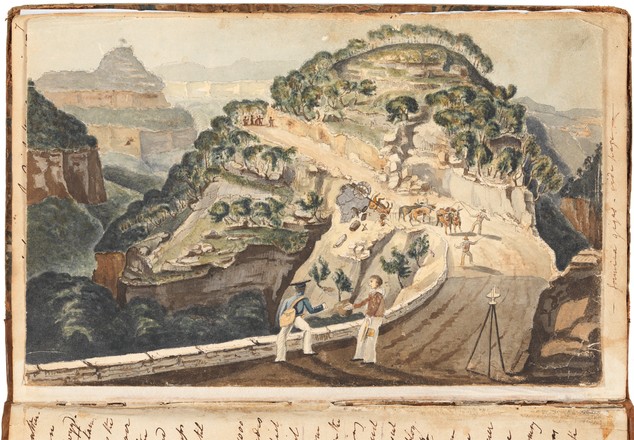
Incident on road at Victoria Pass
November 1835
A 330 (Safe 1 / 404) between pp. 6-7
Ink and watercolour in notebook
Bequeathed by David Scott Mitchell, 1907
A 330 (Safe 1 / 404) between pp. 6-7
Ink and watercolour in notebook
Bequeathed by David Scott Mitchell, 1907
Almost better known for his wild behaviour, the naturally gifted sketcher and surveyor William Govett arrived in New South Wales at the young age of 20, and was immediately assigned to serve on Sir Thomas Mitchell’s staff in 1827.
From 1828 to 1833 Govett surveyed the area west of Sydney to the Blue Mountains. He is most noted for his work on the Old Bathurst road, and discovering the waterfall ‘Mitchell’s Leap’ named in honour of his superior. Mitchell was so impressed with Govett's work, that he re-named the fall ‘Govett’s Leap’ to pay tribute to his star surveyor.
Govett was particularly interested in depicting local Aboriginal people and their customs.*He learnt from their knowledge of the land, and noted their rituals and practices in journal. This notebook with entries written in his hand provides a detailed description of times and distances of his route through the Blue Mountains. Govett also records details of the terrain, including 31 drawings (tipped in) illustrating the journey. Several of the sketches appear to have been inserted at a later date, possibly by other people with several annotations on the reverse of the sketches written in pencil.
Footnotes
http://www.daao.org.au/bio/william-govett/biography/?


 Back to list
Back to list